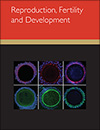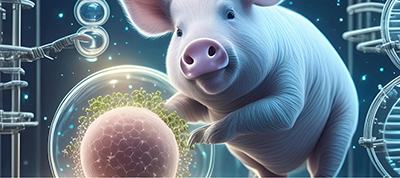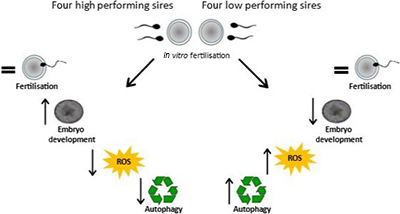In our investigation into age-related infertility, we examined the presence of α-synuclein, a protein associated with brain aging, particularly in gonadotropin-releasing hormone (GnRH) neurons in hypothalami. Contrasting samples from young and old cows, we observed significant differences in α-synuclein levels across the specific hypothalamus regions linked to reproductive function. These findings suggest that α-synuclein may play a pivotal role in the mechanisms underlying age-related infertility, paving the way for further inquiries into potential therapeutic avenues in reproductive health. Image by Hiroya Kadokawa.

Reproduction, Fertility and Development
Volume 36 Number 15 2024
Improving pig embryo development holds great promise for agriculture and biomedical research. This study investigated the use of a zinc chelator, 110-phenanthroline, to enhance assisted oocyte activation in pigs following intracytoplasmic sperm injection. While no differences in embryo development or quality were found, this indicates that zinc chelation is a potentially safe method for inducing oocyte activation, providing a foundation for future advancements in human and animal assisted reproductive research. Image generated by ChatGPT-4 (OpenAI, 2024).
RD24129 Abstract | RD24129 Full Text | RD24129PDF (1 MB) Open Access Article
This collection celebrates the important contributions James (Jim) Michael Cummins made to the field of reproductive biology. It covers a variety of topics but with a clear focus on spermatology where Jim’s impact, as a scientist and teacher, was most profound. As a core member of the Editorial Board of Reproduction, Fertility and Development, for a series of Editors-in-Chief, he was a font of wisdom for all aspects of the field, including reproductive technology in humans, and acted as a guardian of editorial principles and ethics.
This article belongs to the Collection Dedication to Jim Cummins.
Understanding how a sire influences early embryo survival, especially in dairy cattle, can enhance dairy industry efficiency and offer insights for other mammals. Investigating cellular stress in early embryos, this study found that low-performing sires, despite fertilising oocytes equally, may cause lower survival rates in the embryo’s first week due to increased cellular stress mechanisms. Identifying this phenomenon sheds light on malfunctioning cellular mechanisms regulated by the sire, ultimately reducing embryo survival. Image by Lindsey Fallon.
This article belongs to the Collection Dedication to Jim Cummins.







